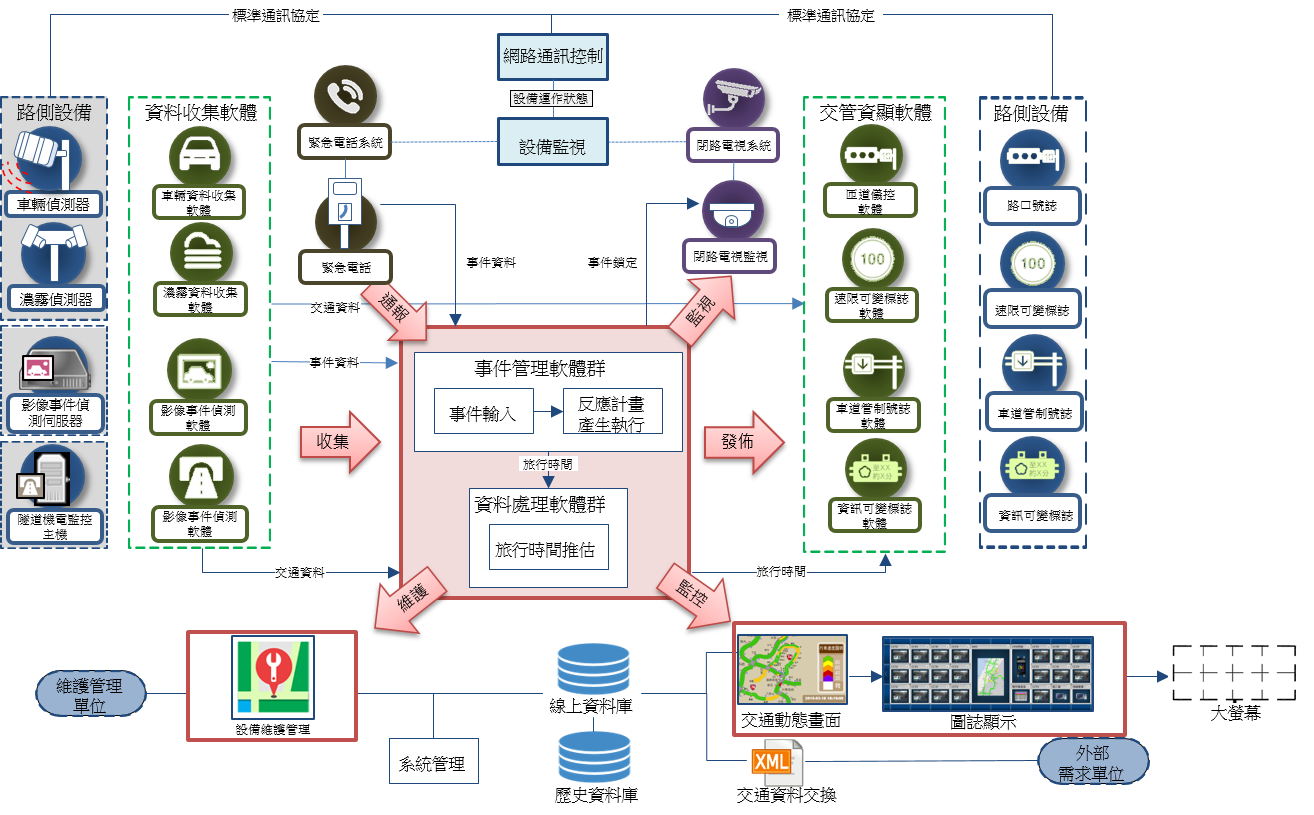Smart Applications
Intelligent Transportation Service | Smart City Control Solutions | AIoT innovative application services assist digital transformation | Smart Pole Solution | AR remote video collaboration application | Drone application solutions - unmanned aerial vehicles / drones | VSV Cloud (Video Surveillance Cloud) | Technological disaster prevention and smart construction solutions | Intelligent Building Management System solutions
Intelligent Transportation Service
Brief IntroductionReal-time traffic information services are an essential part of intelligent transportation systems. For road users, having access to comprehensive and sufficient traffic information whether before a trip or during travel, including road conditions and public transportation transfer details can provide greater flexibility in choosing different routes and modes of transportation.
Descriptions of Features and AdvantagesWith the increasing popularity of smartphones, it is anticipated that there will be market demand and business opportunities for providing intelligent transportation services via mobile devices. This project aims to deliver the most accurate traffic information to customers. By leveraging smartphones to provide users with real-time traffic information services, the scope of services can be expanded. Additionally, while offering these services, smartphones also function as mobile probe vehicles (GPS-based vehicle probes), transmitting location, heading, and speed data via GPS/3G. This information is received and processed in the cloud to calculate the average speed of road segments, thereby enriching the database and broadening the coverage of traffic information. As a result, traffic data can evolve from being merely "real-time" to enabling "analysis and prediction," ultimately establishing B2B or B2C business models and creating more comprehensive intelligent transportation services.
Tools |
Equipment Monitoring and Maintenance System
Since winning the bid for the Central Region Traffic Control System Project (Contract R22) of the National Freeway Network at the end of 2008, and receiving the “Golden Road Award” (for outstanding road engineering) from the Ministry of Transportation and Communications, our company has continued to focus on the research and development of intelligent transportation systems. National highways and freeways are like the arteries of a city, bearing the critical responsibility of north-south transportation. Taking the Central Region Maintenance and Construction Office as an example, the total length of highways under its jurisdiction (National Highways No. 1, 3, 4, and 6) is 365 kilometers, and the expressways (Provincial Highways 72, 74, 76, and 78) total 200 kilometers. There are over 2,000 roadside facilities in the region, placing a significant responsibility and burden on equipment maintenance. With the increasing popularity of smartphones, there is an anticipated market demand and business opportunity for providing intelligent transportation services via mobile devices. This project aims to offer customers real-time equipment monitoring and maintenance solutions, helping traffic control equipment management evolve from paper-based processes to mobile app-based operations. Not only does this make maintenance reporting simpler and more time-efficient, but it also significantly improves equipment reliability. Furthermore, equipment monitoring and maintenance operations can be extended from "real-time maintenance" to "preventive maintenance," gradually moving toward Industry 4.0 and creating the next milestone in smart innovation.
With the rapid growth in smartphone users, the continuous emergence of new applications has been further accelerated. This project leverages the characteristics of the Internet of Things (IoT) to establish an on-site equipment attribute database and integrates Google Maps. This allows users to perform equipment maintenance operations directly on their smartphone screens. Additionally, through GPS/4G positioning, users can view the connection status and hardware condition of equipment on the map, effectively creating a "real-time dynamic GIS" system. Future development will focus on big data analysis, aiming to achieve fault prevention by analyzing tens of thousands of maintenance records. For example, by examining data such as time, location, and repair frequency, it is possible to identify areas where equipment tends to fail during specific periods. This enables management units to take preventive measures in advance and reduce potential risks.
|
Traffic Control Software
With the continuous construction and expansion of national highways, in order to enhance the operational performance of road services in the central region and alleviate traffic congestion, the Central Traffic Control Center—serving as the brain and core of the traffic control system—along with the completion of the traffic control software, has taken on the responsibility of monitoring road conditions and managing traffic across the central regional road network.
Traffic control software is primarily designed to assist personnel at traffic control centers in systematically managing routine operations. These include tasks such as traffic volume collection and analysis, operating information display boards to show road conditions, and implementing ramp metering to regulate freeway traffic, particularly during extended holiday periods. However, with the growing trend toward mobility, tasks that require real-time reporting and response such as highway construction notifications and incident dispatch can now be handled directly through mobile apps. These apps enable users to report and dispatch incidents via smartphones, significantly reducing the time needed for incident reporting and enhancing the ability to manage various types of traffic incidents. This allows for real-time awareness of on-site conditions and contributes to achieving the goals of an intelligent transportation system.
|

.png)

